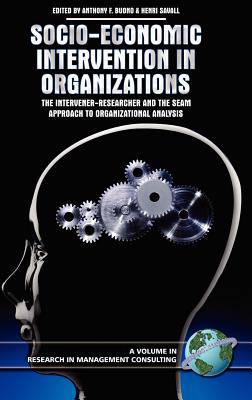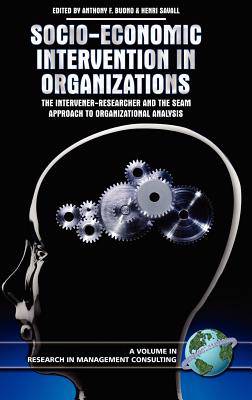
- Afhalen na 1 uur in een winkel met voorraad
- Gratis thuislevering in België vanaf € 30
- Ruim aanbod met 7 miljoen producten
- Afhalen na 1 uur in een winkel met voorraad
- Gratis thuislevering in België vanaf € 30
- Ruim aanbod met 7 miljoen producten
Socio-Economic Intervention in Organizations
The Intervener-Researcher and the Seam Approach to Organizational Analysis
Omschrijving
The volume begins with a chapter by Henri Savall, founder and director of the ISEOR Institute and creator of the SEAM methodology, that presents an overview of the development of the socio-economic approach to management, and its guiding frameworks and methodology. The chapter s detailed explanation of the underlying thinking, tools, and techniques of socio-economic management serves as the primer for the remainder of the volume. The book is then divided into three sections. The first part presents illustrations of SEAM interventions in different types of organizations, including industrial and service companies, and not-for-profit organizations, including cultural institutions and sports clubs. The next section looks at cross-cultural applications and assessments of SEAM experiments in Africa, Asia, Mexico, and the United States, with a concluding chapter on intervening in multinational corporations in general. The volume concludes with a section that examines different issues and challenges in SEAM intervention, ranging from the impact on and role of middle managers in the SEAM process, intervening in small organizations, SEAM s facilitative role in operationalizing and institutionalizing information technology, conceptualizing, and implementing organizational change, facilitating merger and acquisition integration, and the application of socio-economic management in sales and marketing. The book also contains a combined glossary and chapter index that provides a definition of key terms and concepts in the SEAM methodology and where they appear in the volume. These key terms are highlighted in bold italics throughout the volume, illustrating their application in different contexts.
Specificaties
Betrokkenen
- Uitgeverij:
Inhoud
- Aantal bladzijden:
- 456
- Taal:
- Engels
- Reeks:
Eigenschappen
- Productcode (EAN):
- 9781593116224
- Verschijningsdatum:
- 16/02/2007
- Uitvoering:
- Hardcover
- Formaat:
- Genaaid
- Afmetingen:
- 156 mm x 234 mm
- Gewicht:
- 811 g

Alleen bij Standaard Boekhandel
Beoordelingen
We publiceren alleen reviews die voldoen aan de voorwaarden voor reviews. Bekijk onze voorwaarden voor reviews.










